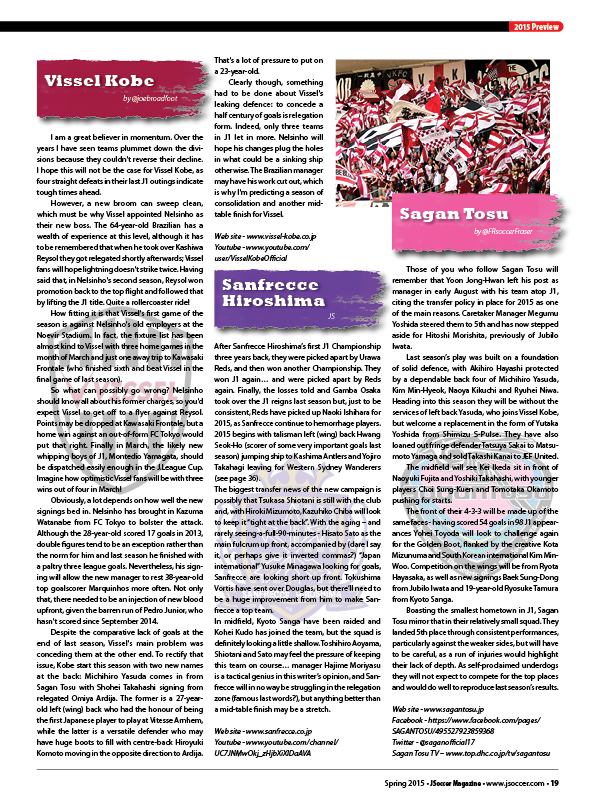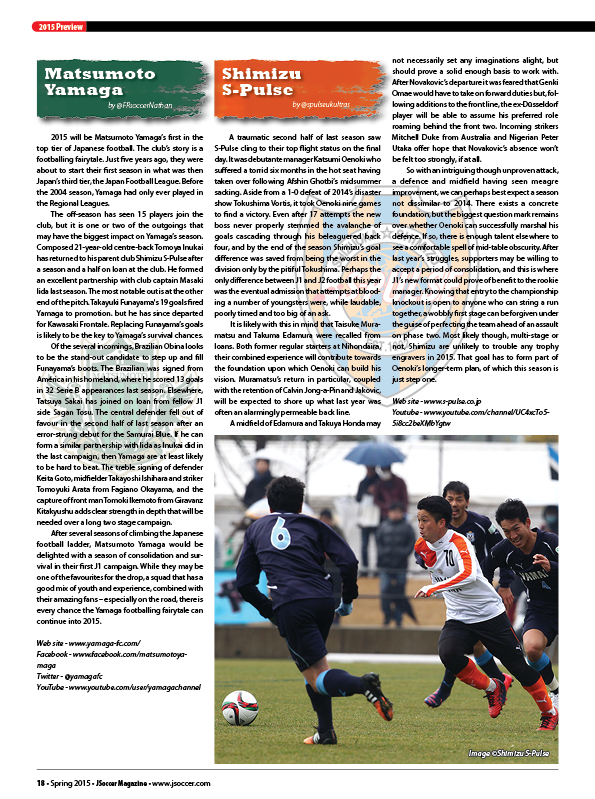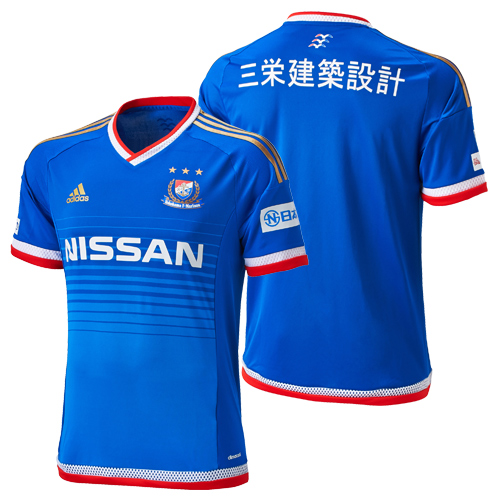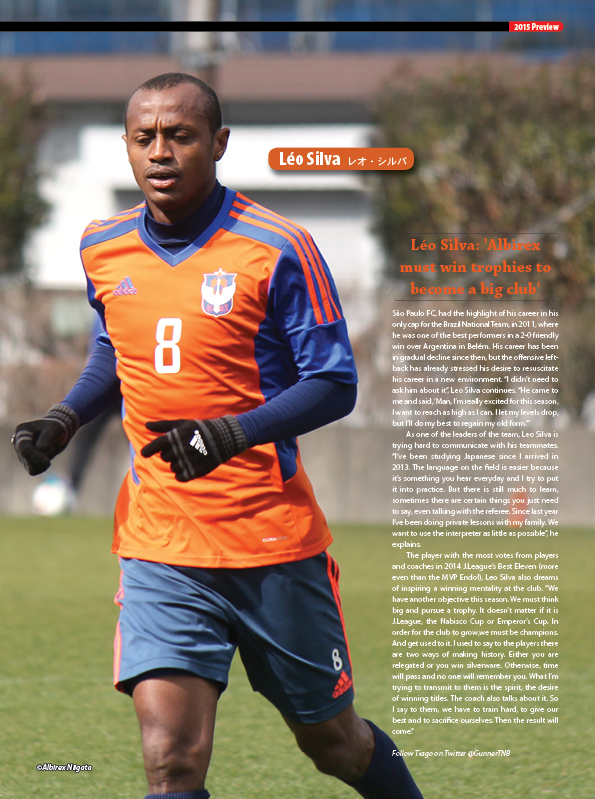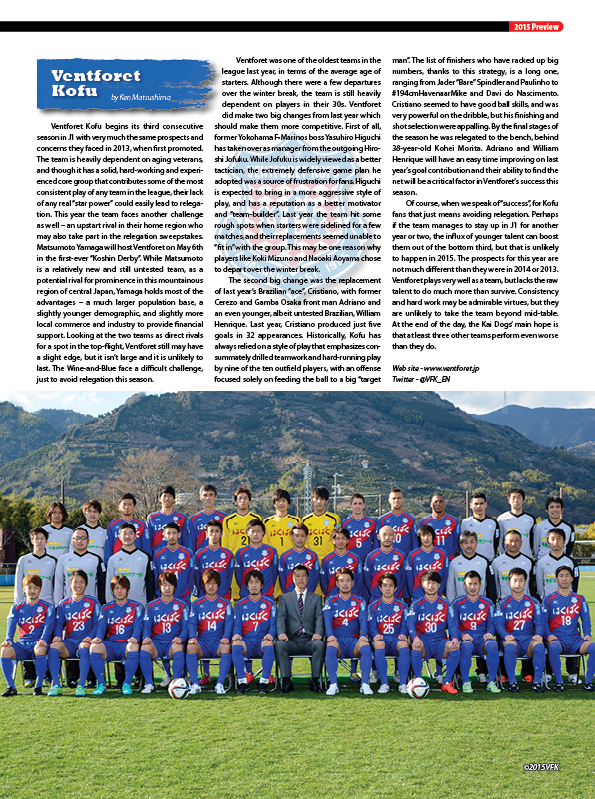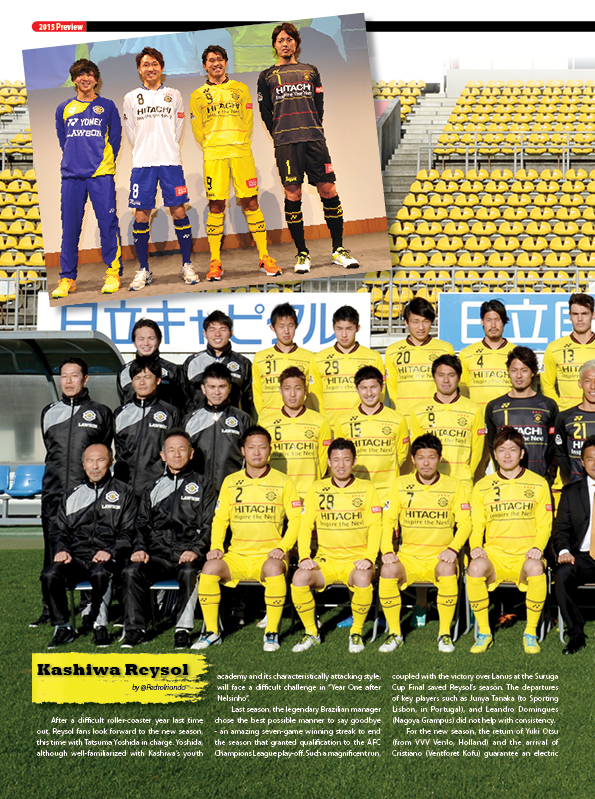By @JSoccerMagazine for JapanFooty.com
LAST SEASON:
Nagoya Grampus manager Akira Nishino told me early last season that he had a long-term plan to rebuild the team and that 2014 would be successful if he managed to lose some dead wood, bring in some youngsters and a add a couple of key players, while avoiding relegation. He had the backing of his board/owners and it seems the supporters also understood that it would be a season of consolidation and didn’t give the team a hard time, despite their flirting with the relegation zone at times during the campaign.
They finished with a goal difference of minus one, a reflection on Nishino’s approach to football that saw Gamba Osaka score goals galore in a decade of his management, while conceding by the truckload, also. Nishino’s approach has not changed and Nagoya are another team where he seems to have instilled the philosophy of “they score three, we’ll score four (or at least try to). Boredom is one thing that did not set in when watching Nagoya Grampus in 2014.
Ending the season very much mid-table – 10th position, 13 points off relegation and 12 points off an ACL spot – the team seem poised to improve upon the steady rebuilding that has taken place.
TRANSFER ACTIVITY:
Last season saw Grampus bring in two players mid-season who will, hopefully, be key THIS season. Kengo Kawamata and Leandro Domingues should now be more settled and ready to improve on last season’s placing. They will be joined by Novakovic from Shimizu S-Pulse and buoyed by the news that Kensuke Nagai’s loan move from Standard Liege has been made permanent. Akira Takeuchi returned from JEF United – he spent 2006 to 2011 with Nagoya and will be a familiar face to the fans. Shun Obu – a central defender from Fukuoka University will be pushing for a place and hoping to learn from Tulio.
2015 HALF FULL:
Future Japan international Kengo Kawamata, and midfield general Leandro Domingues arrived during the last campaign and should have now fully settled in, while Kensuke Nagai is back fully on board the Nagoya Express; three players who could make the difference between a top-three finish and being also rans again. They’ll certainly expect to be among the goals. The aging and injury prone pair of Kennedy and Tamada have been released, a good chunk of cash to invest in more players mid-season, perhaps? Could the missing link be just a transfer away? Mid-season moves were decent enough last season, could there be more in 2015? With forwards gelling, an injury-free season and a tightening up of the backline we could see some two-stage play-off action for Nagoya this season.
2015 HALF EMPTY:
While defense has never been a priority for Nishino, the back line does seem a little threadbare with just a university rookie and a returning “reject” from a J2 outfit coming in, and the fans may have to allow either another season of rebuilding/consolidation OR accept the fact that they may well leak goals, before starting to show any impatience. If the goal scorers don’t gel or suffer injuries there does not seem to be strength in depth in this squad (yet) and, if the forwards don’t produce – for whatever reason – but the goals are still conceded it may well be difficult for Grampus to mount a serious challenge for the top four place they should be going for this season.
KEY PLAYER:
It’s time for Taishi Taguchi to step up. Kawamata MUST prove why many observers want(ed) him in the national team. Novakovic could well be yet another shrewd Nishino signing – he makes a habit of going for foreign players who already have experience in Japan, and improving their output. But, as I have noted, that goals should be there this season. The key point is going to be less goals conceded. With that in mind, I feel that Tulio will be the key man. Not necessarily for his actual performances, but more for the leadership he will need to show to bring through the less-experienced members of a team that has a future. If Tulio fails to lead from the back – Nishino’s “coach on the field”, Nagoya will struggle to reach their potential.
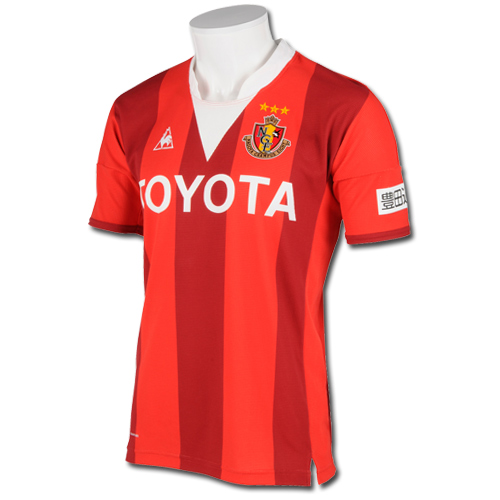
Another view from @heavy_stereo_
Nagoya Grampus, who rarely seem to make big changes between seasons, added only three players to the squad, but all seem to be key changes.
In goal, nothing has changed from last year, with Seigo Narazaki appearing to be the number one choice, ably backed up by Yoshinari Takagi. With Koji Nishimura and Masataka Nomura also on board, plenty of competition for places. If Narazaki manages 30 more games, he will reach a magical 600 J1 games – a feat unmatched after two decades of J.League play.
In defence, Shun Obu, coming in from Fukuoka University, is a tall central defender who will make the competition for places more heated. Obu actually played in some J1 games as a “special case” player last season and has already already proved that he has potential. Also incoming, from JEF United, is Akira Takeuchi, who previously played for Grampus from 2006 to 2011. One also can not miss the development of Yusuke Muta and Yuki Honda. With the incoming youngsters It goes without saying that the experience of Tulio is very important, as Grampus blood the next generation.
In midfield, there will be a noticeable absence of Naoshi Nakamura, who retired after 14 years with the club. His number 7 shirt has been handed to Taishi Taguchi. In central midfield, the combination of Taguchi and Danilson looks to be the first choice for manager Akira Nishino. With Yoshizumi Ogawa – our number 10 – Leandro Domingues, and up-and-coming young players like Asahi Yada
there will be plenty to choose from and a healthy competition for places.
Up front the club said sayonara to Josh Kennedy and Keiji Tamada but Kensuke Nagai, Kengo Kawamata and Novakovic – signed from Shimizu S-Pulse are regarded as a potent trio who should be able to be among the goals.


